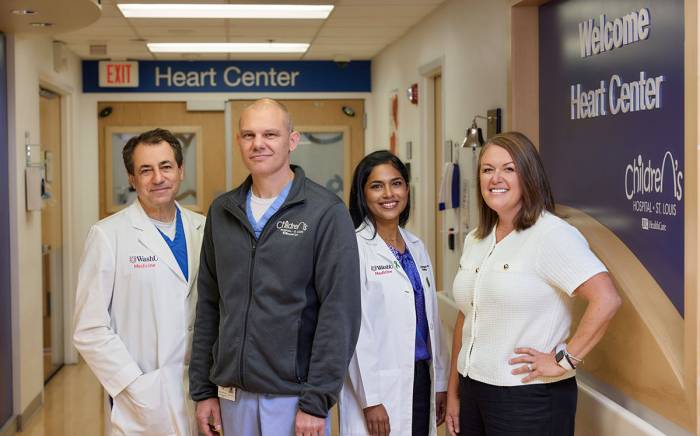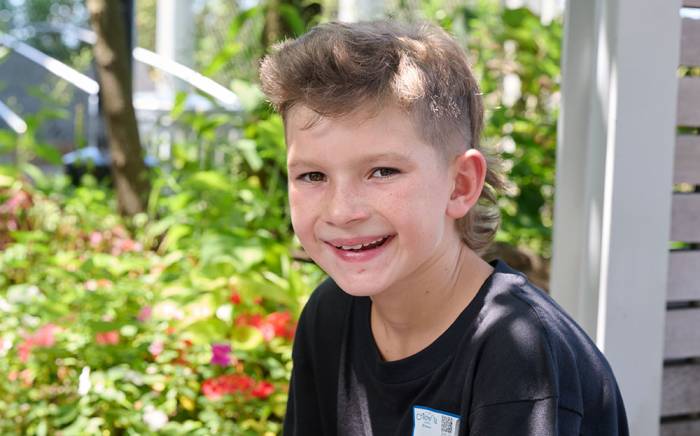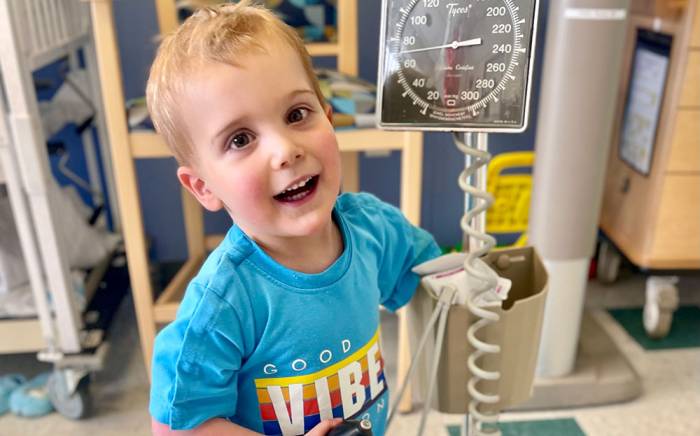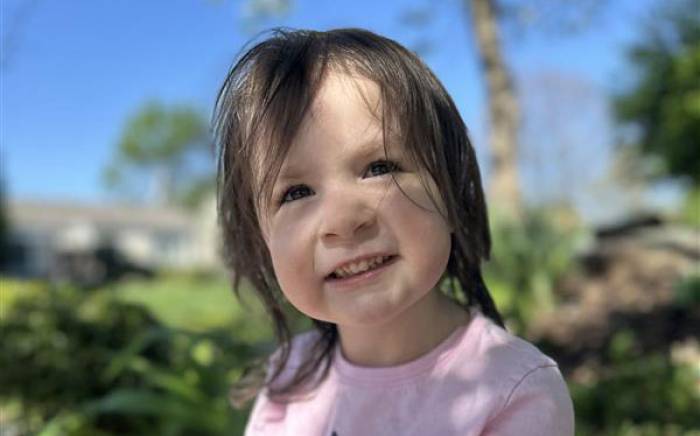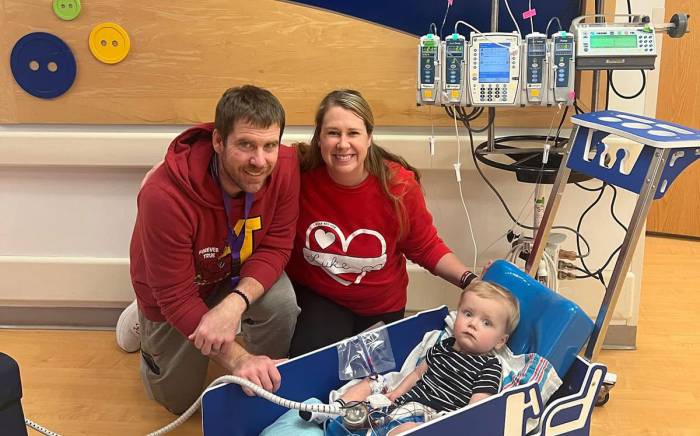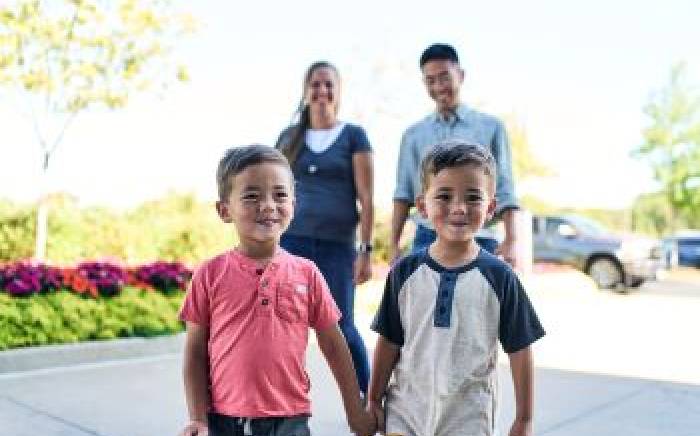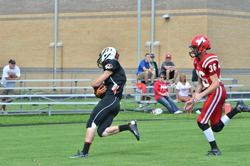 When Zac Egleston was 16 years old, he did something very few young people typically do. He listened to his body and sensed something was wrong.
When Zac Egleston was 16 years old, he did something very few young people typically do. He listened to his body and sensed something was wrong.
During an annual sports physical with his family physician in Olney, Ill., Zac mentioned that he had been experiencing a pain in his chest that didn’t go away quickly.
His mom, Lesile Geier, says their doctor took Zac seriously and, after listening to his heart a little more intently, recommended he see a pediatric cardiologist, Ramzi Nicolas, MD, in Springfield, Ill.
After a series of tests, including an EKG and echocardiogram, Dr. Nicolas told Zac on May 31, 2011, that he had a dilated aortic root and the high school athlete was done with sports.
“I knew this was devastating news for Zac, but it could have been catastrophic if he continued activity at that time,” Dr. Nicolas recalls.
Zac’s dilated aortic root was approximately 4.8 cm (a normal size would be 3 cm to 3.5 cm). If it had ruptured due to exertion of any kind, Zac could have bled to death, Geier says.
“One more run for a touchdown, one more sprint for a base, one more time chasing his brother, one more time picking up his little sister, and he could have been gone,” she says. “Praise God for his protection. But this was a lot to absorb. We never saw so many football fields as we did on the ride home that day.”
Zac says the devastating news definitely scared him.
“I just kind of shut down,” he says. “I grew up playing sports, and suddenly I couldn’t.”
When Zac returned to Springfield for his six-month check-up with Dr. Nicolas, following a CT scan and another echocardiogram, they learned that the dilation had grown to 5.1 cm. Zac underwent genetic testing to see if his diagnosis might be associated with Marfan syndrome or other connective tissue disorders, but that was not the case.
Unsure about why it had grown, Dr. Nicolas sent Zac’s records to St. Louis Children’s Hospital and cardiothoracic surgeon Pirooz Eghtesady, MD, PhD., director of Pediatric Cardiothoracic Surgery at St. Louis Children’s Hospital and co-director of the St. Louis Children’s and Washington University Heart Center.
Dr. Eghtesady says Zac was facing three significant risks: the aortic aneurysm could rupture; there could be progressive leakage causing damage to the valve; and there was a possibility of dissection.
“Any of and all three of these risks can be pretty catastrophic,” he says. “Once the aortic root starts enlarging in the range of 4 to 5 centimeters, depending on the patient’s underlying genetic conditions, if any, and or whether there has been significant increase in size, like more than 0.5 cm per year, then next steps need to be taken.”
On Dec. 15, 2011, Dr. Eghtesady, along with colleagues, performed open-heart surgery on Zac to remove the aortic root and replaced it with an artificial tube graft called Dacron; the medical team suspended his valve in this tube and re-implanted his coronary arteries into proper position. It is called a valve-sparing aortic root replacement procedure.
Dr. Eghtesady told Zac’s family that the aorta was ulcerated and paper thin, according to Geier.
“Zac was out of the cardiothoracic intensive care unit in less than 24 hours and home in less than a week. Everyone at St. Louis Children’s Hospital was wonderful, and we knew we were in the best place we could be,” she says. “The surgery allowed Zac to have his 17th birthday at home on Jan. 2, 2012.”
His mom says he was strong and determined, and his favorite saying was, “I got this.” Although Zac had his moments of being scared and was unsure of what was happening inside of him, the family tried to get back to their new normal, and Zac returned to school four weeks earlier than expected, she adds.
On March 20, 2012, three months after surgery, Zac got news he never thought he would hear again. Dr. Nicolas told him that after six months of conditioning exercises and if his next echocardiogram was good, he could return to football and baseball again.
“Everything went great for Zac after his surgery,” Dr. Nicolas says. “The best moment was when I could tell him he could play sports again.”
This past fall, Zac was able to return to his position as a wide receiver on the East Richland High School football team.
“He’s the one they had to run after and tackle,” Geier says. “The first few times on the field made me nervous, but the first touchdown was phenomenal.”
Zac says once he was cleared to play by his doctor, everything changed.
“I really wasn’t scared any longer,” he says. “I don’t have those symptoms I used to feel, like the tightening in my chest.”
Dr. Eghtesady says a lot of credit goes to Zac for paying attention to the changes in his body, as well as his family physician and Dr. Nicolas, who was so proactive in his care.
“It is so important as physicians that we listen to our patients,” he says. “They really know what they are feeling and what is going on in their bodies.”
Zac’s prognosis is very good, says Dr. Nicolas, who will continue to see Zac until he is 21 and then will recommend him to an adult cardiologist for regular exams.
“We want others to know about Zac because it’s so important that student athletes have physicals and that doctors, coaches, and parents listen to their kids,” Geier says. “We are very grateful to our community and the doctors and nurses who cared for him.”

